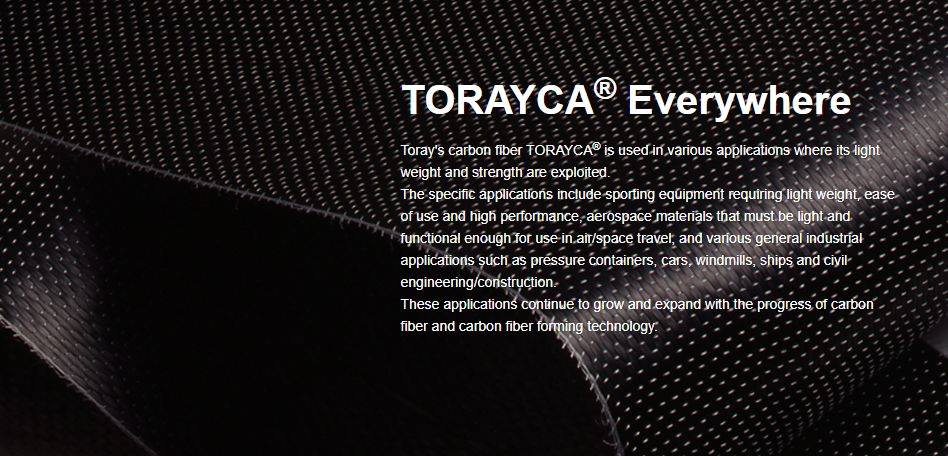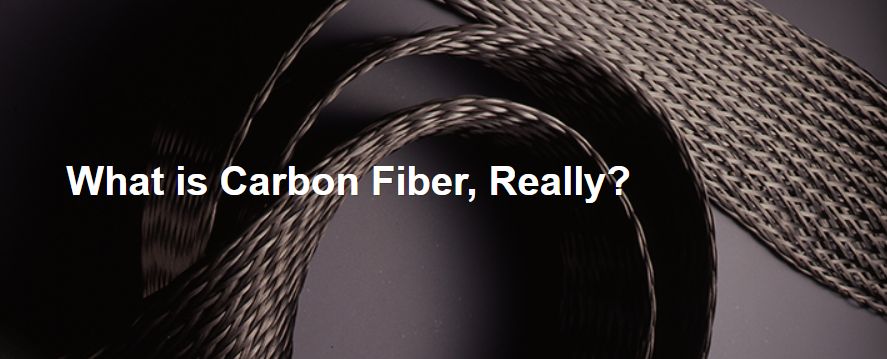TorayCarbon
Lehké, ale silné pruty nabízejí vynikající vlastnosti,.... tlumení vibrací přenáší odezvu ryby efektivně. Obecně se říká, že "tenké, lehké a silné" rybářské pruty jsou nejlepší. Důležité vlastnosti jsou vysoká tuhost a snížení hmotnosti." S vývojem uhlíkových vláken, které nabízejí vysoký specifický modul pružnosti, se rybářské pruty staly lehčími ... Light but strong rods offering excellent vibration damping transmit the response of the fish effectively. It is generally said that "thin, light and strong" fishing rods are the best. The use that is highly required is "High rigidity and Weight reduction." That's because fishing rods must be appropriately sized for ease of holding and light, very rigid, easy to tackle, feel the response from the fish, and take in the fish. In particular, "sweetfish fishing rods" used in Japan from ancient times are long and heavy (bamboo rods each span 6.2 m, weigh 1.5 kg and have an outer diameter of approx. 50 mm), and must be handled with both hands, which is fun but a lot of trouble. With the development of carbon fiber offering high specific modulus of elasticity, however, these fishing rods have become lighter and are now called "carbon rods" and considered premium/sports fishing rods along with "crucian carp rods and mountain stream rods."

What is carbon fiber ?
Actually, the same substance used to make sweaters,
blankets and other familiar things in life is also behind
this cutting-edge material "carbon fiber."
Carbon fiber is literally a fiber made of carbon. The carbon content is 90% or more for carbon fibers of standard modulus of elasticity, and virtually 100% for carbon fibers of high modulus of elasticity. Nitrogen is the primary element other than carbon.
Carbon fiber is produced by baking polyacrylonitrile (PAN) fiber, pitch fiber or other organic fiber in an inert atmosphere to dissociate elements other than carbon. At least 90% of commercially available carbon fibers are PAN carbon fibers made of PAN fiber, because PAN fiber is better than pitch carbon fiber in terms of the balance of performance, cost, ease of use, etc. Toray manufactures PAN carbon fibers. In fact, we lead the global carbon fiber industry as the number-one carbon fiber producer in performance, quality and volume.
The two key features of carbon fiber are its excellent strength and light weight. The specific gravity of carbon fiber is around 1.8, which is approx. one-fourth of iron's specific gravity of 7.8. Carbon fiber is also significantly lighter than aluminum and glass fiber having a specific gravity of 2.7 and 2.5, respectively. In addition, carbon fiber has excellent strength and modulus of elasticity: its specific strength calculated by dividing the tensile strength by the specific gravity, is approx. 10 times the specific strength of iron, while its specific modulus of elasticity calculated by dividing the modulus of elongation by the specific gravity, is approx. 7 times that of iron. That's why carbon fiber is a favorite lightweight material to replace conventional metal materials. Carbon fiber has various other characteristics such as not failing due to fatigue, not rusting, and chemically and thermally stable. It is a highly reliable material whose characteristics are stable over long time even under severe conditions.
Now, Boeing 787 and other jet airplanes have emerged that are significantly lighter, more fuel-efficient, more flexible in terms of design, and more comfortable, thanks to their body, main wings, tail plane and other structural members made of carbon fiber composite materials benefiting from the aforementioned characteristics of carbon fiber.
